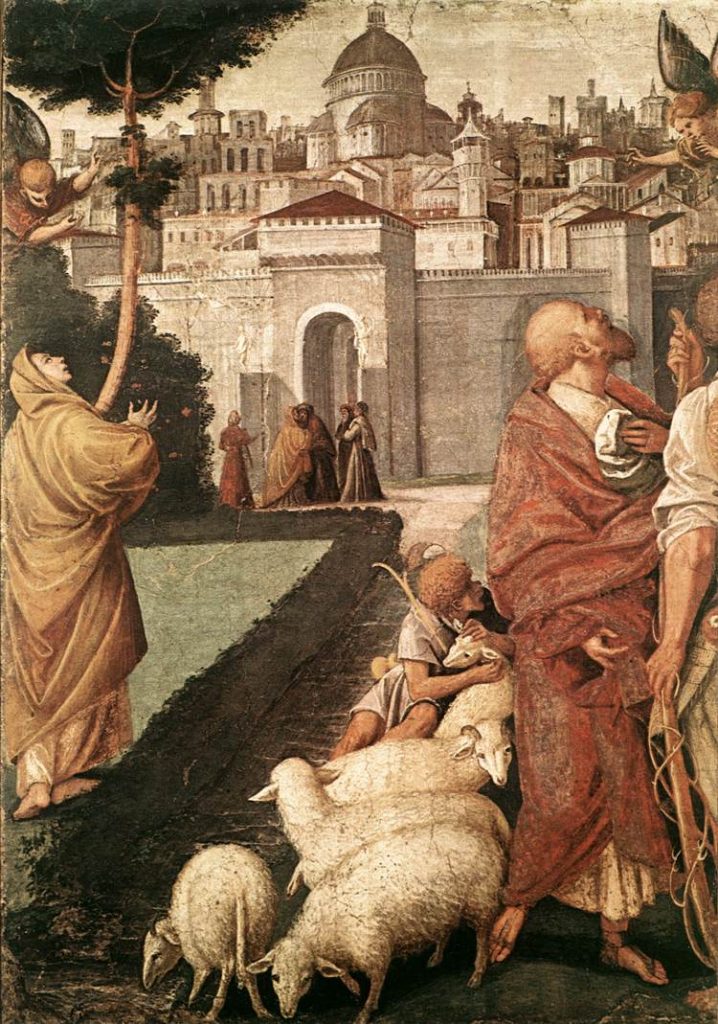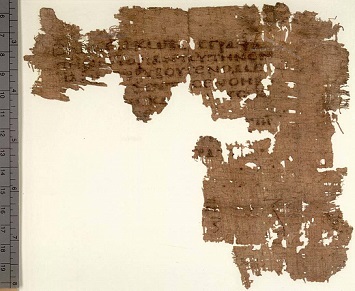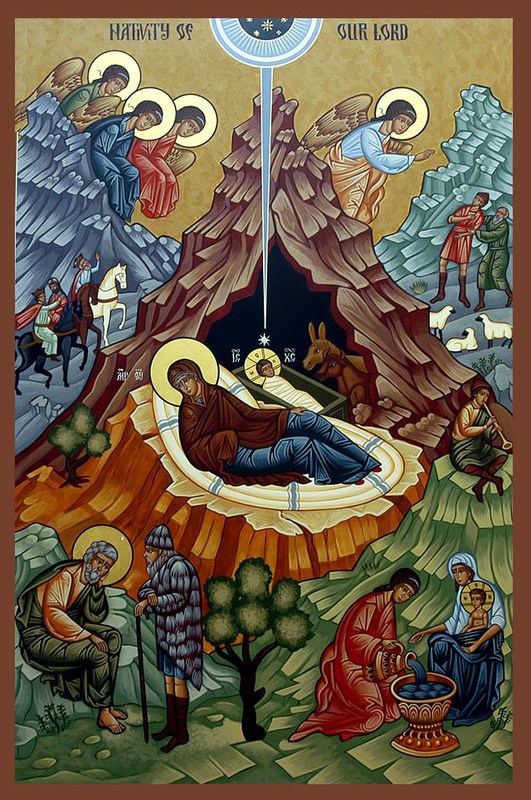
We can trace the origins of many of the traditions found in nativity plays to what are known as the infancy gospels, pseudepigraphal works written much later than what we now refer to as the canonical gospels. The oldest and most famous of these is the Protevangelium of James also known as the Gospel of James, or The Infancy Gospel of James.

Analysis of the Protevangelium reveals that while the writer was evidently familiar with earlier legitimately inspired writings, the majority of the text is just as evidently fabricated and does not harmonize with the biblical record. The writer is clearly unfamiliar with Jewish customs and conspicuously and repeatedly contradicts them. It is therefore highly improbable that he was either Jewish or a Jewish Christian, and quickly renders the entire document questionable in the extreme. The story of Mary’s childhood as presented in the Protevangelium has no biblical or independent historical support. The Protevangelium was written to artificially enhance Mary’s role in Christian tradition and serves as evidence of how quickly non-biblical motifs became common in the early church. The majority of the text is fanciful to the point of absurdity. It is genuinely tragic that certain “facts” about the nativity likely originated with the Protevangelium and escaped scrutiny for so long.
Highly questionable “facts” proposed by the Protevangelium include:
- The fact that Joseph, Mary, and/or Mary’s parents were from and/or lived in Nazareth is never mentioned or even implied. On the contrary, it is strongly implied that Mary was born in and lived the majority of her life in or near Jerusalem.
- We are given Mary’s parent’s names: Joachim and Anna. This contradicts Matthew 1:16, where Mary’s father is named Joseph.[1]
- Joachim and Anna were childless, and Joachim was prohibited by the priests from offering sacrifice because of it.
- Joachim was grieved and went into the desert for 40 days and nights to fast.
- Anna was also grieved over her childlessness and prayed that God would bless her like he has blessed Sarah.
- Anna prayers were answered by an angelic visitation, upon hearing the news, Anna declared that she would dedicate the child, whether male or female, to the Lord’s service.
- Anna’s conception was in essence “miraculous”.
- The infant Mary walked at only six months old.
- Joachim and Anna took Mary to the Temple when she was three years old, where she “dwelt like a dove and received food from the hand of an angel” for nine years.
- Under the guidance of another angelic visitation, the high priest assembled “the widowers of the people” to find a husband for Mary when she was twelve years old.
- Joseph was “chosen by lot” to be Mary’s husband when a dove landed on his head.
- Joseph initially refused because he was an “old man” with children already, but when threatened by a priest with divine retribution if he did not, Joseph agreed to marry her.
- Mary was of the family of David.[2]
- We find the phraseology “Hail Mary, full of grace, the Lord is with thee, blessed art thou among women,” in the Protevangelium.
- Mary “grew bigger” in only three months of pregnancy and therefore had to hide herself.
- Mary was sixteen when she had Jesus.[3]
- In her sixth month she was “big with child” and therefore was discovered by Joseph as pregnant.
- A scribe named Annas discovered Mary’s pregnancy, reported it, and brought Joseph and Mary before a tribunal.
- Joseph and Mary faced trial by ordeal but were found innocent.
- Mary rides a donkey while very pregnant (ready to deliver/in labor).
- The road outside of Bethlehem is described as a desert (which is incorrect).
- Jesus was born in a cave (incorrect), and not a stable (which is also incorrect).
- Because Mary was in labor, Joseph left her in a cave with his two sons and went to find a midwife.
- Joseph and Mary are described as both betrothed and married, but their exact relationship is unclear. The writer is clearly unfamiliar with Jewish marriage customs.
- The midwife performed an invasive gynecological examination on Mary to determine that she was still a virgin after giving birth.
- The Magi saw “a star of great size,” so bright that it obscured the light of the other stars.
- The star seen by the Magi traveled through the sky until it stood over the cave.
- The young John the Baptist was miraculously hidden from Herod during the slaughter of the innocents.
- Herod murdered John’s father Zechariah in the Temple about the time of the slaughter of the innocents. The writer of the Protevangelium equates this with the “blood of Zachariah” in Matthew 23:25.
- Upon Zechariah’s murder, the priests cast lots and chose Simeon (Luke 2:25 ff) as his replacement.

Some of these facts are not problematic in and of themselves. Many childless couples undoubtedly grieve their childlessness. Mary could have been sixteen. And miracles do happen. It is the abundance of errors and blatant contradictions to the biblical text that cast significant doubt on the few facts that may indeed be possible.
The Bible clearly records many miracles that are presented as a fundamental component of orthodox Christian faith. Therefore, when critically examining a pseudepigraphal work we do not dismiss the miraculous out of hand. But at the same time, given the presence of so many fundamental errors and contradictions in the text we are forced to question whether the miracles in the Protevangelium were genuine or invented to attempt to give the document credibility.
Other than Mary possibly being 16 at the time she had Jesus, and that she was from the family of David, the Bible does not support any of the so-called “facts” cited in the Protevangelium, and plainly contradicts many of them. The Protevangelium of James cannot be concluded to be a reliable historical source about the nativity.
[1] Analysis and comparison of the Greek and Aramaic texts of Matthew 1:16 reveal that it should not be translated “husband” of Mary, but rather father of Mary.
[2] This fact is not problematic. Mary clearly was from the family of David.
[3] This fact is also not so problematic. The possibility that Mary was a teenager are high, but there is no evidence that supports her being precisely 16.